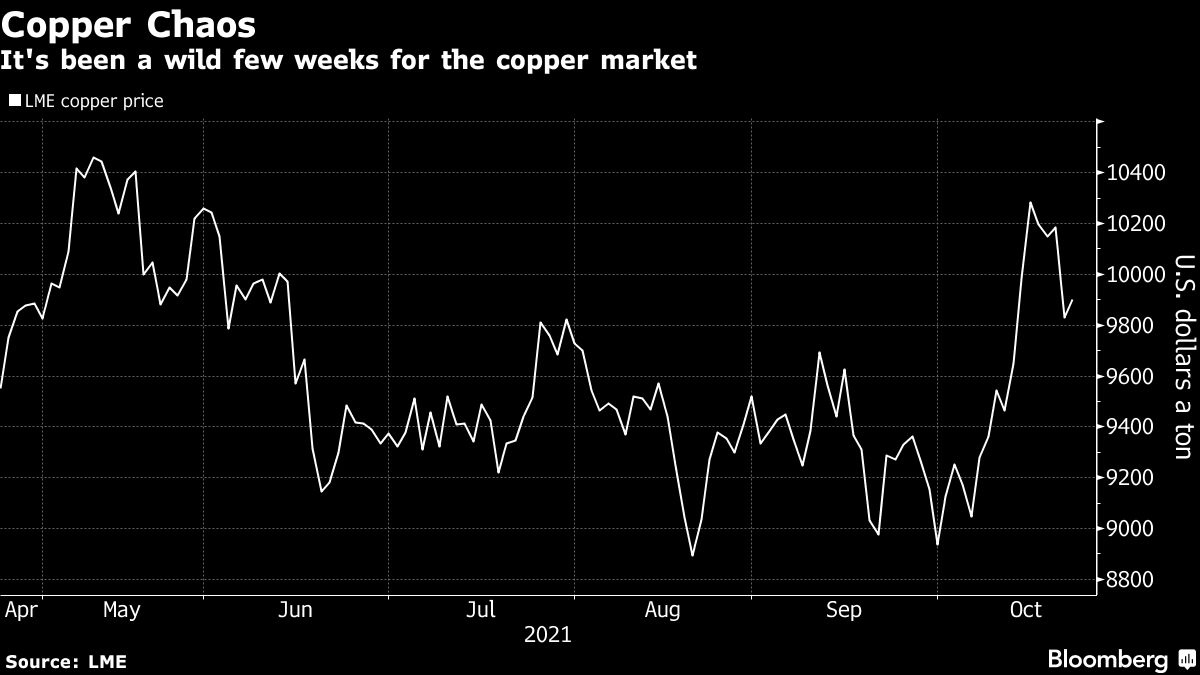Oct 22, 2021
Copper, aluminum erase gains as energy crisis roils market
Bloomberg News

Copper, aluminum and nickel erased early gains to resume their slide as the global energy crisis and growing concerns about global growth continue to roil the industry.
The energy crunch, fueled by record coal and gas costs, has forced metal output cuts from China to Europe, depleting inventories, while suppliers such as copper mining giant Freeport-McMoRan Inc. are producing less metal than the market expected, adding to concerns of a tight market.
While tight markets traditionally support base metal prices, investors are now putting more weight on how soaring costs might hurt global growth. On the energy front, dwindling crude stockpiles could signal more reductions ahead for markets. President Joe Biden has warned gas prices will stay high this year, Europe’s leaders are bickering over power supplies, and Beijing is battling to secure winter fuel “at all costs.”
The London Metal Exchange’s index of metals prices has retreated from last week’s record high, driven by mounting demand concerns and worries around China Evergrande Group. While the indebted real-estate developer’s cash crisis has created a threat to the Chinese economy, market sentiment improved Friday as Evergrande staved off default.

Copper slid 0.5 per cent to US$9,780 a metric ton by 3:56 p.m. on the London Metal Exchange, and is down 4.9 per cent this week. Nickel and aluminum also retreated, while lead, tin and zinc rose.
Meanwhile, supply remains under pressure, especially in China. The country’s Jiangxi province started power rationing to industrial sectors including steel, aluminum and copper, according to researcher Mysteel. The southern province, a major producer of refined copper and copper products, is the latest to battle a power shortage that could worsen in winter heating season.
Chinese provinces have been rushing to meet annual energy intensity reduction goals by shutting plants. More than 30 per cent of capacity in the steel, aluminum and cement industry must meet the government’s most stringent standards for emissions and energy efficiency by 2025, according to longer-term guidelines released on Thursday night.





